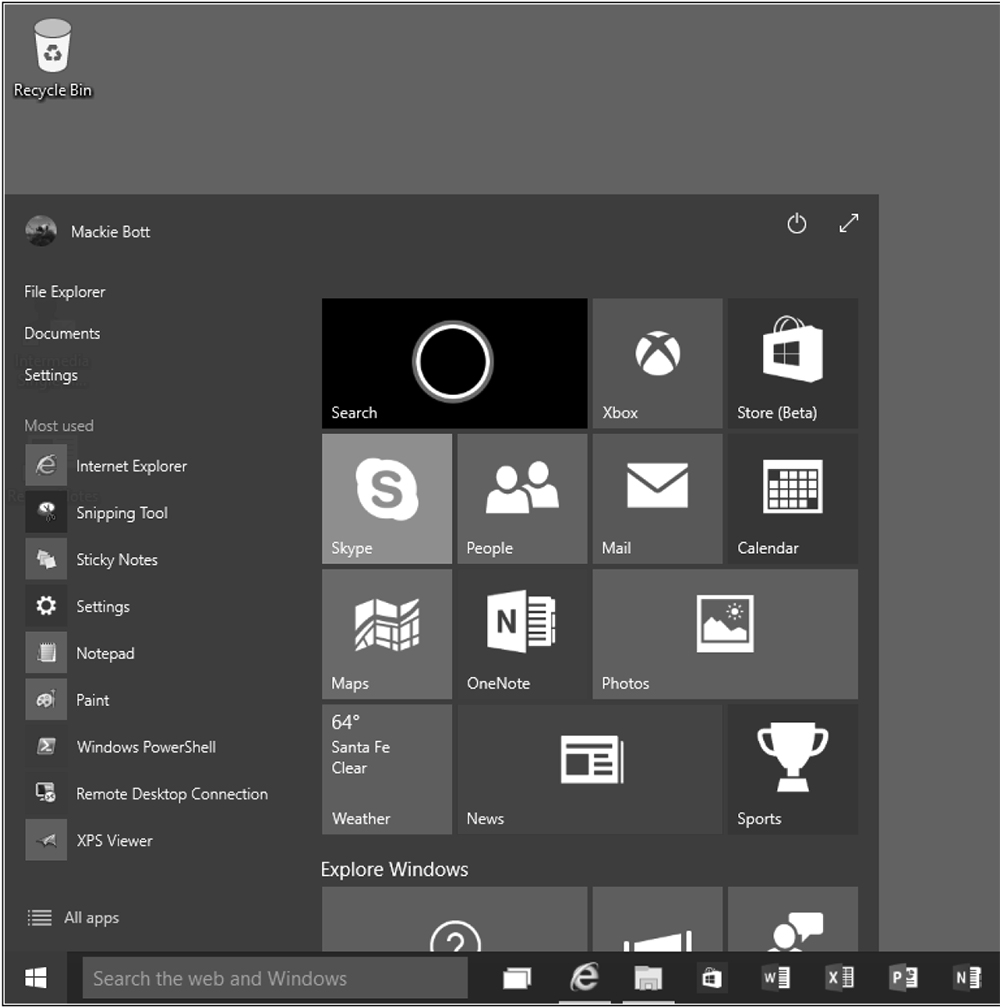Configuring the Windows Environment
Hardware and Display Options
Windows 2000 includes Microsoft System Information (Msinfo32.exe), which is an updated version of the Microsoft Windows NT Diagnostics tool (Winmsd.exe).
You can start Microsoft System Information with Winmsd.exe as in Windows NT 4.0, but the difference under Windows 2000 is that Winmsd.exe is a stub executable file that starts Msinfo32.exe. Msinfo32.exe is located in the Program Files\Common Files\Microsoft Shared\MSInfo folder.
You can start Microsoft System Information with Winmsd.exe as in Windows NT 4.0, but the difference under Windows 2000 is that Winmsd.exe is a stub executable file that starts Msinfo32.exe. Msinfo32.exe is located in the Program Files\Common Files\Microsoft Shared\MSInfo folder.
Evolution of the Windows user experience
In the beginning, there was the Windows 95 Start button, which actually included the word Start. Clicking that button led to the Start menu, which was chock-full of shortcuts to programs, utilities, and settings. Both of these crucial parts of the user experience evolved significantly in appearance and functionality over the years, but a time traveler from 1995 would have no trouble recognizing the Start menu in Windows 7.
In a singularly controversial decision, the designers of Windows 8 removed the Start button and Start menu completely, replacing them with a full screen filled with live tiles instead of icons. The Start button returned in Windows 8.1, although its main function was to provide access to the Start screen. Now, by popular demand, the Start menu returns in Windows 10.
In the Windows 10 Preview (the April 2015 update), clicking the Start button opens a menu similar to the one shown in
Figure 4-1.

Upgrading to Windows 10
A new approach to updates and upgrades
As I mentioned, the most revolutionary change in Windows 10 is the concept of continuous improvement. New features are delivered through Windows Update rather than being set aside for the next major release. In a major change of
longstanding best practices, Microsoft now recommends that enterprise customers enable Windows Update for the majority of users, although the option to use Windows Server Update Services (WSUS) might still be available for some configurations.
In the Windows 10 Technical Preview, the more-or-less monthly new builds are delivered through Windows Update.
Participants in the preview program can choose between two update speeds, also known as rings. Choosing the Fast ring makes new builds available as soon as they are released by Microsoft; opting for the Slow ring delays the availability of a new build until it has been thoroughly vetted by the Fast ring, with any bugs addressed via interim updates. When Microsoft officially releases Windows 10 to the public, the preview program will not end. Members of the Windows Insider program will continue to receive early access to new updates, using the same Fast and Slow rings. Windows users who are not part of the preview program will receive updates for what is known as the Current Branch. In addition, Microsoft has committed to an additional approach for enterprise customers who want a more stable environment, with a Current Branch for Business that is several months behind the consumer releases as well as Long Term Servicing branches that are appropriate for mission-critical applications.
Participants in the preview program can choose between two update speeds, also known as rings. Choosing the Fast ring makes new builds available as soon as they are released by Microsoft; opting for the Slow ring delays the availability of a new build until it has been thoroughly vetted by the Fast ring, with any bugs addressed via interim updates. When Microsoft officially releases Windows 10 to the public, the preview program will not end. Members of the Windows Insider program will continue to receive early access to new updates, using the same Fast and Slow rings. Windows users who are not part of the preview program will receive updates for what is known as the Current Branch. In addition, Microsoft has committed to an additional approach for enterprise customers who want a more stable environment, with a Current Branch for Business that is several months behind the consumer releases as well as Long Term Servicing branches that are appropriate for mission-critical applications.
